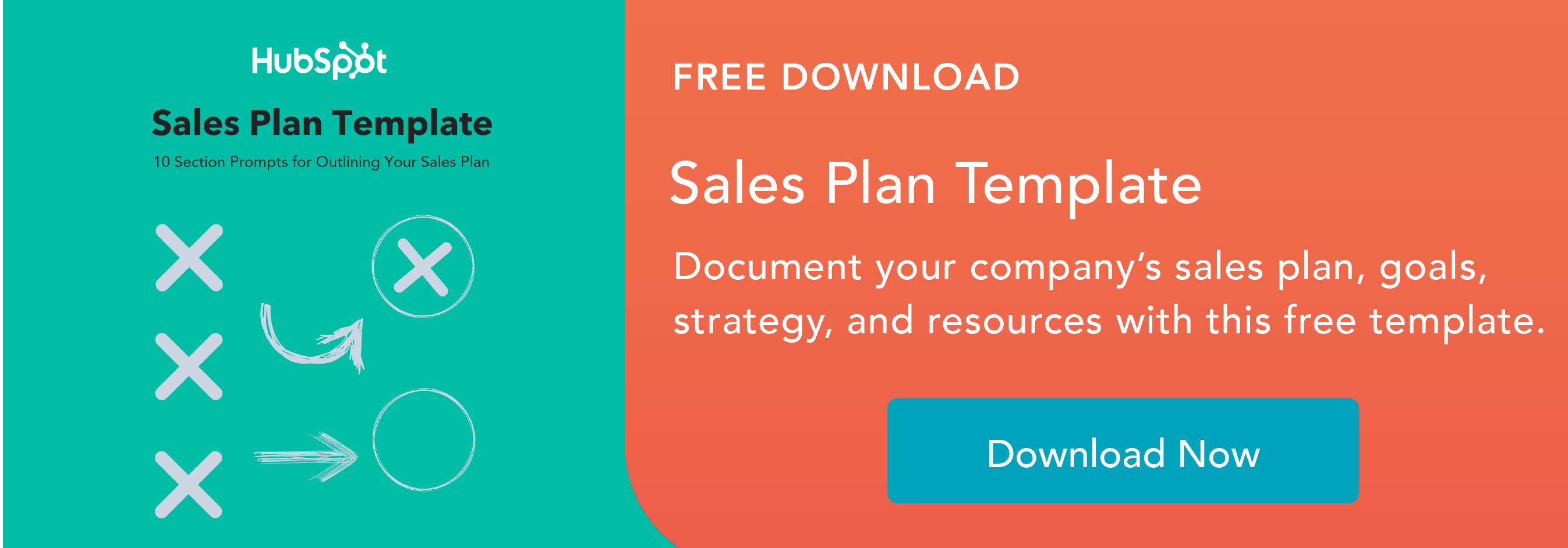Ways to Increase Profit Margin
1. Audit your strategies to identify inefficiency.
Increasing your profit margin is, at its core, a matter of improving the key points and processes that might be holding you back. And as you can assume, you can't do that if you have no idea what those points and processes are.
This step more or less enables you to address every other one on this list. You need to take a thorough, comprehensive look at how you're spending money, how you're producing your product or service, your acquisition and retention strategies, and any other crucial factors that impact your revenue generation or production costs.
Pore through your expense reports to pin down any frivolous or unnecessary spending. Find gaps in your sales process where a disproportionate number of prospects fall off. Evaluate your marketing strategies and service infrastructure to see if you can improve how you attract and retain customers. Conduct competitive benchmarking to see how your industry peers are faring.
One way or another, find what you're doing wrong and work to correct it. If you want to improve your profit margin, you can't go in blind.
2. Reduce operating expenses with strategic cuts and automation.
Expenses have a direct bearing profit — they're literally half of the equation. So if you want to improve your profit margin, you can start by streamlining your operating expenses as much as possible.
You can take all kinds of strides, including:
- Looking into issues you might be having like unnecessary staffing
- Ditching expensive office space if most of your team can function remotely
- Paying invoices as early as possible for potential discounts from vendors
- Finding services or subscriptions you might not be using regularly and cutting them from your budget
Another avenue you can take here is finding ways to automate certain tasks your business consistently carries out. If you look hard enough, you'll probably be able to find some inefficient day-to-day processes that burden your staff.
Once you identify those, seek out software that can take the manual legwork out of them and free up your employees' time. That kind of freedom to focus on key responsibilities will almost always help reduce operating expenses.
3. Strategically raise prices.
Increasing prices means boosting revenue on every sale you make — so if you can strategically and successfully raise prices without alienating too many customers, you can boost your profit margin automatically.
That said, tactfully increasing prices is much easier said than done — to the point that a lot of businesses are reluctant to even touch this strategy. Pricing models are finicky, and there's no one-size-fits-all remedy that any company can apply to see the results it wants.
Optimal pricing strategies vary from business to business based on factors like industry, market position, product suite, and external factors like broader economic circumstances.
And if you want to pin down one that will work best for you, you'll need to conduct extensive market research, conduct competitive benchmarking, thoughtfully shape and understand your buyer personas, and be prepared to ride out the tides of trial and error.
For more insight on how to construct an effective pricing strategy, check out this article.
4. Reshape your brand identity and reputation.
If prospects are willing to pay more for your product or service, your profit margin on each sale will expand — that's pretty straightforward. But driving that newfound willingness is a bit more complicated.
Why would a potential customer be inclined to buy your product at a higher price point? How can you motivate them to get there? Well, you would probably want to start by reshaping your brand identity and bolstering your reputation as a premium option in your space.
There are a few ways you can get there. For one, you can add features and functionality to your product or service that your competitors don't offer. You might also try implementing a comprehensive aesthetic redesign to your branding to give off a more luxurious impression.
You could also implement a prestige pricing strategy — a method where you sell your product or service at a higher price point to create the impression of higher quality.
The list of strategies I just referenced is far from exhaustive. There are several other ways you can justify charging more for your product or service — but almost all of them require some degree of legwork and brand reinvention.
5. Focus on customer retention.
Customer retention — a business's ability to keep customers on board over time — can be a solid focal point for any business looking to improve its profit margins. Acquiring customers is considerably more expensive than retaining them.
So if you want to generate revenue without piling too much on your operating expenses, you might want to look towards your existing customer base. Start by setting clear and reasonable expectations that your customers can count on from the start of your relationship.
Constantly communicate the ROI they're seeing as a result of leveraging your product or service. Make sure your customer service infrastructure is active and effective. Ask for your customers' feedback and act on it.
Show them you care, and take any other possible steps to serve your customers while letting them know they're getting serious mileage out of your offering. If you go this road and do it right, you can boost your revenue at minimal cost — upping your profit margin while bolstering customer loyalty.
What's a good profit margin?
The concept of "a good profit margin" is pretty fluid and varies widely from industry to industry — so it's hard to pin down a one-size-fits-all optimal number. To help you gauge where your profit margin stands relative to your competition, here's a list of average profit margins by industry in 2021 from NYU.
- Advertising: 0.34%
- Aerospace and Defense: 2.49%
- Air Transport: -25.03%
- Apparel: -3.94%
- Auto and Truck: 1.40%
- Auto Parts: -4.45%
- Bank (Money Center): 20.98%
- Banks (Regional): 23.79%
- Beverage (Alcoholic): 11.95%
- Beverage (Soft): 14.10%
- Broadcasting: 0.12%
- Brokerage and Investment Banking: 12.71%
- Building Materials: 5.06%
- Business and Consumer Services: 2.47%
- Cable TV: 8.50%
- Chemical (Basic): -0.72%
- Chemical (Diversified) : 6.43%
- Chemical (Specialty): 2.21%
- Coal and Related Energy: -31.79%
- Computer Services: 3.62%
- Computers/Peripherals: 12.48%
- Construction Supplies : 5.86%
- Diversified: 12.18%
- Drugs (Biotechnology): -0.94%
- Drugs (Pharmaceutical): 14.10%
- Education: -4.82%
- Electrical Equipment: 7.63%
- Electronics (Consumer & Office): -1.53%
- Electronics (General): 3.49%
- Engineering/Construction: 0.75%
- Entertainment: -3.00%
- Environmental & Waste Services: 3.52%
- Farming/Agriculture: 3.81%
- Financial Services. (Non-Bank and Insurance): 20.13%
- Food Processing: 6.38%
- Food Wholesalers: -0.36%
- Furniture: 4.63%
- Green and Renewable Energy: -34.82%
- Healthcare Products: 10.91%
- Healthcare Support Services: 2.63%
- Healthcare Information and Technology: 10.61%
- Homebuilding: 9.04%
- Hospitals and Healthcare Facilities: 3.70%
- Hotel: -30.78%
- Household Products: 11.71%
- Information Services: 15.76%
- Insurance (General): 1.43%
- Insurance (Life): 6.54%
- Insurance (Property): 6.68%
- Investments and Asset Management: 6.58%
- Machinery: 6.58%
- Metals and Mining: 1.64%
- Office Equipment and Services: 1.95%
- Oil and Gas (Integrated): -7.20%
- Oil and Gas (Production and Exploration): -78.85%
- Oil and Gas Distribution: 0.96%
- Oilfield Services and Equipment: -10.98%
- Packaging and Container: 2.98%
- Paper and Forest Products: 2.27%
- Power: 8.80%
- Precious Metals: 15.79%
- Publishing and Newspapers: -6.27%
- R.E.I.T.: 6.72%
- Real Estate (Development): -0.32%
- Real Estate (General and Diversified): 5.12%
- Real Estate (Operations and Services): 1.53%
- Recreation: -2.12%
- Reinsurance: 2.16%
- Restaurants and Dining: 5.69%
- Retail (Automotive): 3.84%
- Retail (Building Supply): 7.53%
- Retail (Distributors): 2.74%
- Retail (General): 2.79%
- Retail (Grocery and Food): 2.20%
- Retail (Online): 4.95%
- Retail (Special Lines): -0.10%
- Rubber and Tires: -10.40%
- Semiconductor: 20.49%
- Semiconductor Equipment: 17.06%
- Shipbuilding and Marine: -5.99%
- Shoe: 6.86%
- Software (Entertainment): 20.30%
- Software (Internet): -5.60%
- Software (System & Application): 19.99%
- Steel: -1.28%
- Telecom (Wireless): 4.60%
- Telecom Equipment: 10.79%
- Telecom Services: 8.52%
- Tobacco: 15.31%
- Transportation: 3.88%
- Transportation (Railroads): 25.07%
- Trucking: -9.27%
- Utility (General): 8.59%
- Utility (Water): 16.24%
- Total Market: 5.05%
- Total Market (Without Financials): 4.01%
As you can see, the health of your profit margin is going to lean heavily on what your business does and who you're trying to appeal to. Still, it almost always serves you to improve it when you feel you need to. In virtually any case, at least considering some of the strategies listed here can be a big help.
Business Growth

.jpg)

![How Entrepreneurs Navigated (& Survived) Recessions [New Data & Expert Tips for Economic Slumps]](https://53.fs1.hubspotusercontent-na1.net/hubfs/53/Copy%20of%20Featured%20Image%20Template%20Backgrounds%20(55).png)


![Grants for Black-Owned Businesses and Other Funding Resources for Black Business Owners [+ Deadlines for 2025]](https://53.fs1.hubspotusercontent-na1.net/hubfs/53/copy%20of%20jade%20walters%20btb%20(41).png)

%20(1)-1.png)

![Here's How to Value a Company [With Examples]](https://53.fs1.hubspotusercontent-na1.net/hubfs/53/Value%20a%20Business%20fi%20(1).png)

